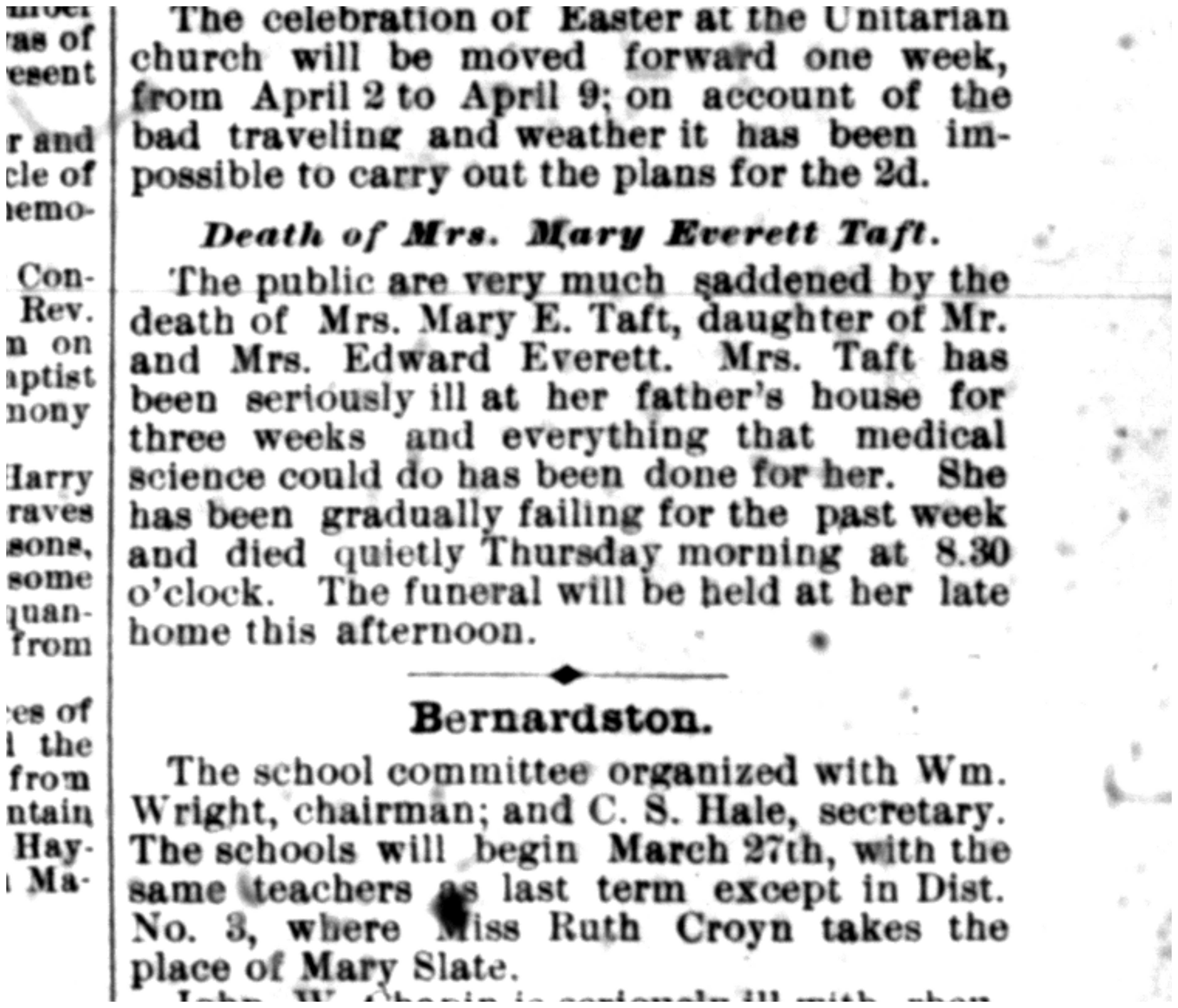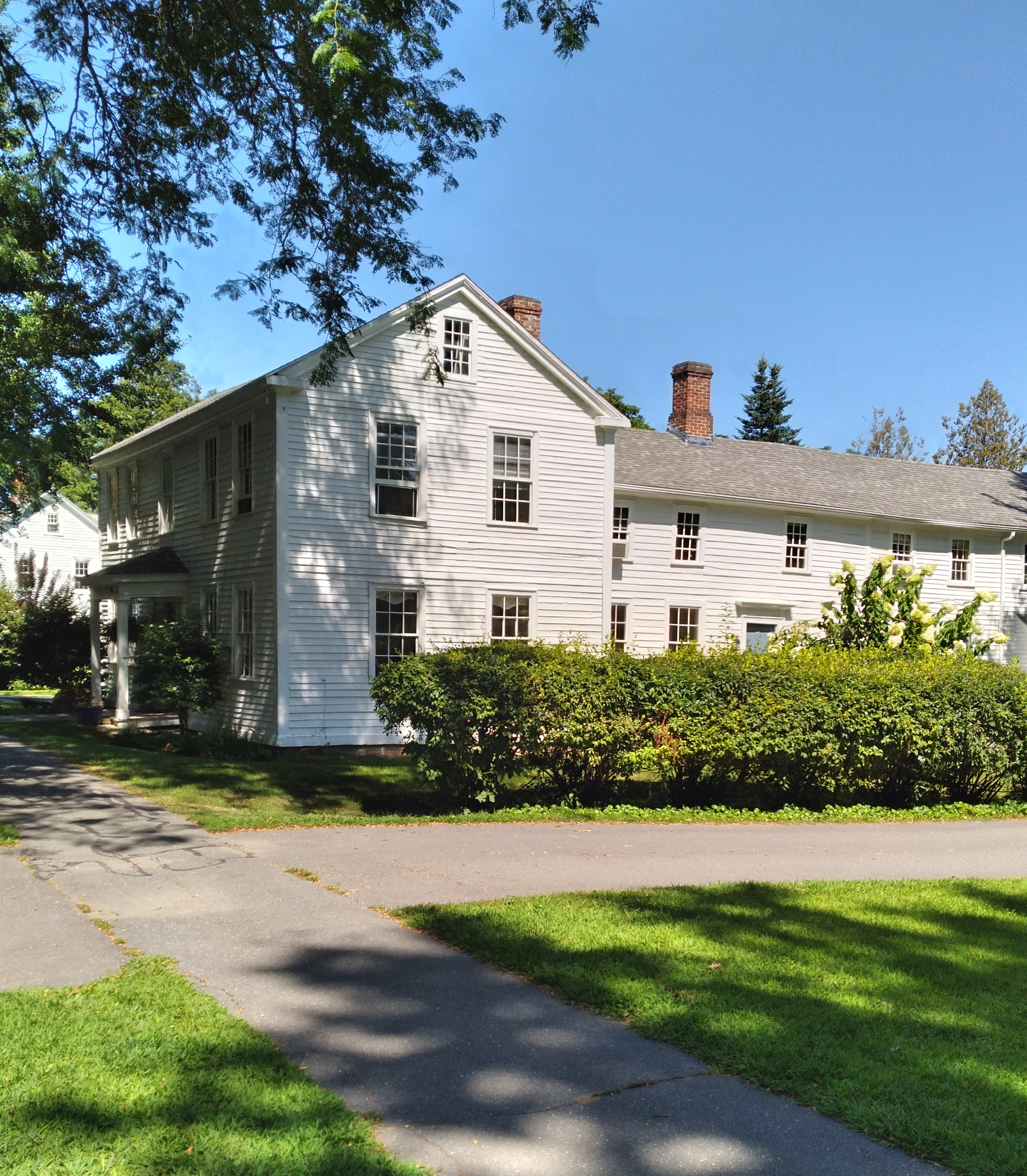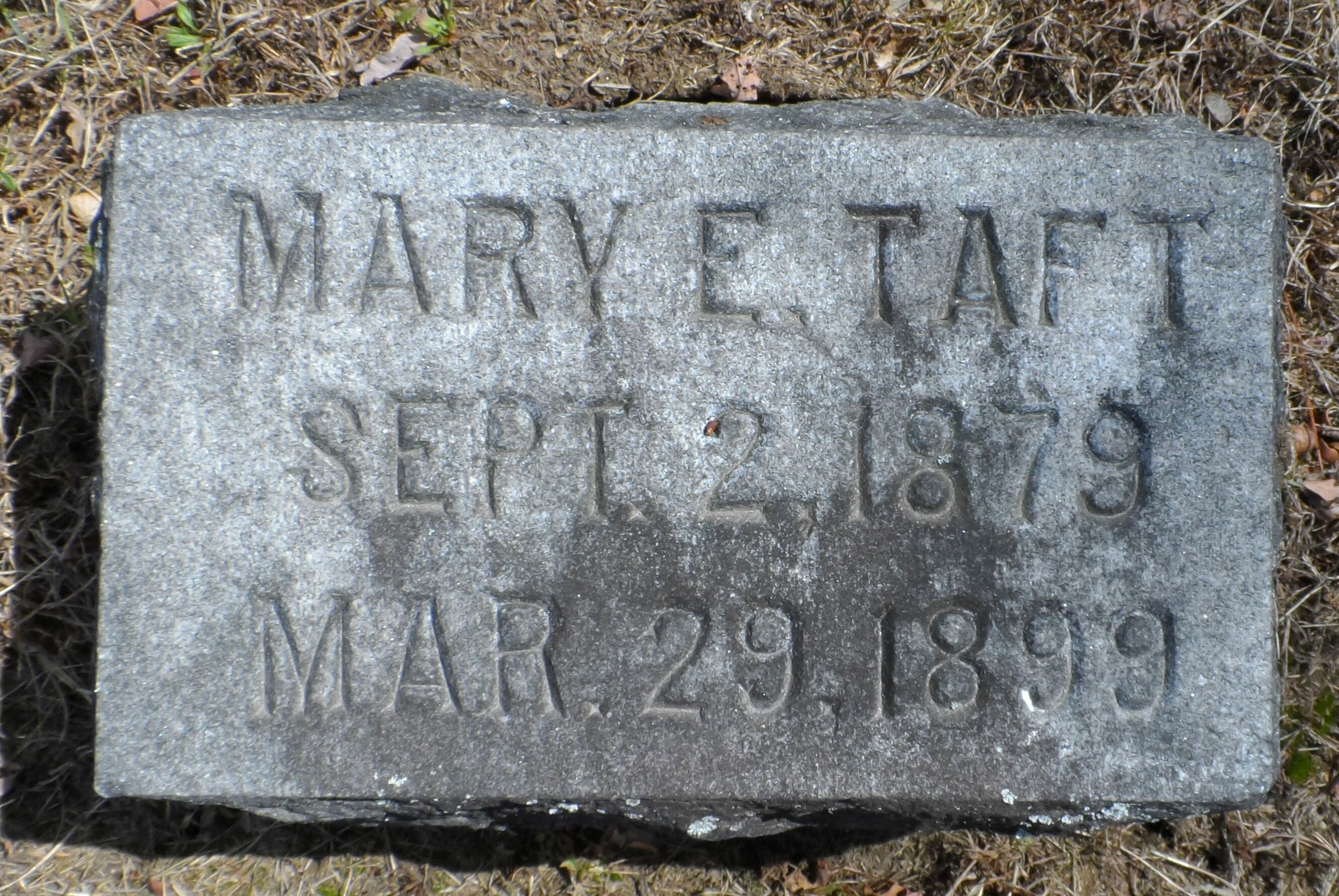By Heather Harrington, Associate Librarian
In the March 25, 1899 issue of the Greenfield Gazette & Courier, the following notice appeared:
“The public are very much saddened by the death of Mrs. Mary E. Taft, daughter of Mr. and Mrs. Edward Everett. Mrs. Taft has been seriously ill at her father’s house for three weeks and everything that medical science could do has been done for her. She has been gradually failing for the past week and died quietly Thursday morning at 8:30 o’clock. The funeral will be held at her late home this afternoon.”
While all of the details listed in the account are true, the whole story is more complicated.
Mary Everett was born in Deerfield on September 2, 1879, to Edward J. and Susan Hawks Everett. Edward was a Civil War veteran who built and operated the Everett House hotel, now the site of a Deerfield Academy dormitory, next to the Frary House, until it burned in 1883. Edward had been born in Albany, and his father had worked for the railroad. Susan Hawks Everett was the daughter of Francis Hawks and spent her life in Deerfield. Mary was one of their four children, two boys and two girls.[1] After the burning of the Everett House, the family moved into the house Susan inherited from her father, today owned by Bement School. The family had suffered great financial loss after the fire, and “never fully recovered.”[2]
Mary’s life as a child is undocumented, but she likely spent her childhood in Deerfield, attending the local grammar school with her siblings and making friends among her neighbors. It is also possible she traveled outside Deerfield into the larger world. Her life was unremarkable for nineteen years, and then she met Eugene D. Taft.
Around Christmas of 1898, when Mary was nineteen, she married Eugene Taft.[3] Mary’s death record provides his name, but no other records are found of this Eugene. Who was he? Was he a young man traveling through Deerfield? Was he an older man looking for a wife? Was he possibly a scoundrel with devious intentions? Whoever he was, his brief interactions with Mary changed her life and dramatically shortened it.
After less than three months of marriage, on March 4, 1899, Mary traveled to Albany and returned later that same day. Upon her return to Deerfield, she began the process of what Dr. Edwin Thorn (1874-1920) later called an “incomplete miscarriage.”[4] A couple of days later, Thorn was called to the family home as Mary has not gotten better and needed medical attention. Thorn was told of the miscarriage, and he treated her accordingly. A couple of days later, he realized Mary was getting worse and needed surgery to remove infected placental tissue. At this point, the family confessed the true story to Thorn; Mary had traveled to Albany to get an abortion. The family kept it a secret as abortion was illegal in the Unites States at that time. Mary continued to experience high fever, infection, and a weak pulse. She died on March 23, 1899.[5]
What drove Mary to seek out what was then considered to be a highly dangerous, scandalous, and illegal procedure? While we will never know for certain, it seems likely that the answer is Eugene Taft. Mary’s husband is not mentioned as being present in Thorn’s letters to his fiancé, in which he described her situation, or in the newspaper death notice. She was staying at her parents’ house; it was her parents who announced her death and buried her. Her husband was nowhere to be found. It seems unlikely that Mary would have gone through with an abortion if her husband were still around. After all, she was a respectable married woman, and having children would have been natural and expected. However, if her husband had deserted her, or if he had proven himself less than honest about his background or identity, then perhaps Mary felt she had no other choice.
It seems likely that Mary did not act alone in this story. How likely is it that a young woman of nineteen years who spent all or most of her life in Deerfield knew how and where to find an abortion provider? Her father had ties to Albany, the railroad, and various people he met while he was a hotelkeeper. It seems likely he would have been able to find someone to perform an abortion. That Mary ended up in Albany, the place where her father was born and lived for a time, seems coincidental. In addition, traveling alone to Albany and back in the same day after receiving her treatment seems unlikely. If her father helped arrange it, then surely one or both of her parents went with her. The Everetts were still suffering financially from the burning of their hotel, and this suggests there was not a lot of money set aside for travel or medical expenses. Mary, as a newly married nineteen year old with an absent husband, probably depended on her parents for support; she certainly had no money to pay for the trip or the procedure. The family must have felt it was truly a desperate situation to take such steps.
The newspaper announcement of Mary’s death does tell the truth. Mary had just died after a short illness, and the doctor had done all he could to help. What it does not tell is the desperation and tragedy of Mary’s story.
[1] Birks, Richard E. “Edward James Everett.” In History and Proceedings of the Pocumtuck Valley Memorial Association, Vol. 5, 1905-1911. Deerfield: Pocumtuck Valley Memorial Association, 1912: p. 296.
[2] McGowan, Susan and Amelia F. Miller. Family & Landscape: Deerfield Homelots from 1671. Deerfield, MA: Pocumtuck Valley Memorial Association, 1996: p. 176.
[3] Edwin Thorn to Luanna Franklin, 19 March 1899, Historic Deerfield Library; and “Massachusetts State Vital Records, 1841-1925”, database with images, FamilySearch (https://www.familysearch.org/ark:/61903/1:1:NWQS-MBQ : 13 December 2022), Mary E. Everett Taft, 1899.
[4] Edwin Thorn to Luanna Franklin, 4 March 1899, Historic Deerfield Library.
[5] Edwin Thorn to Luanna Franklin, 19 March 1899, Historic Deerfield Library.

Fig.1 . – Greenfield Gazette and Courier clipping. 1899.

Fig. 2. – After the burning of the Everett House, the family moved into the house Susan inherited from her father, today owned by Bement School.

Fig. 3. – The tombstone of Mary E. Taft.